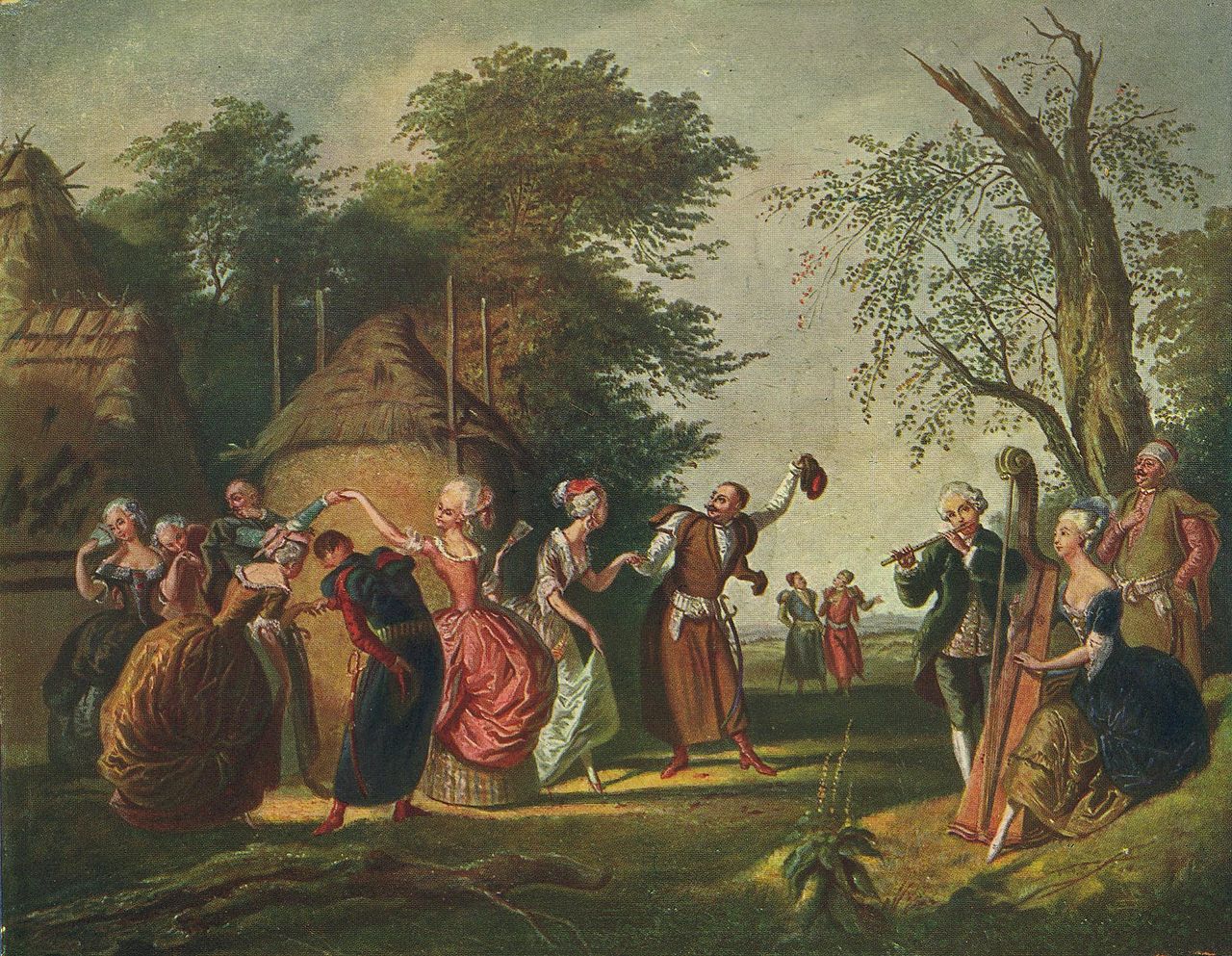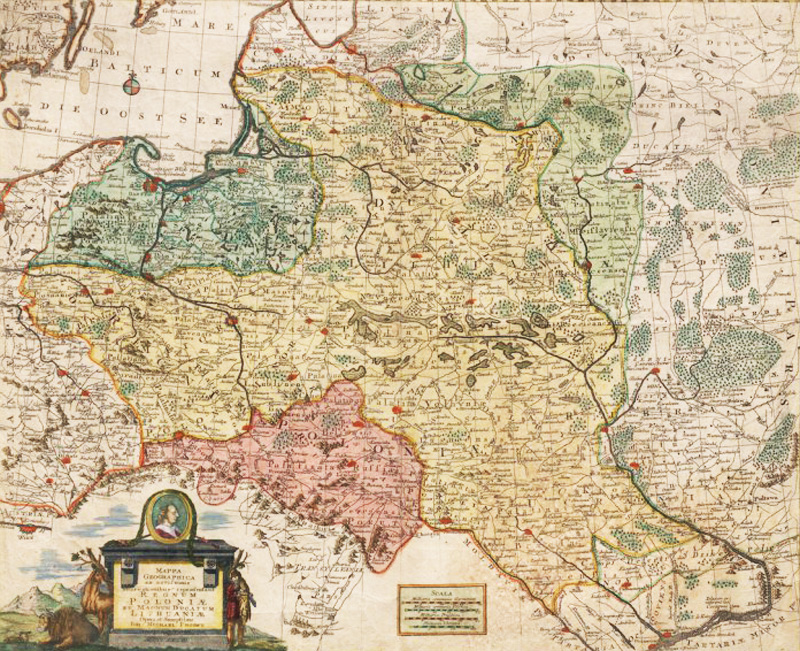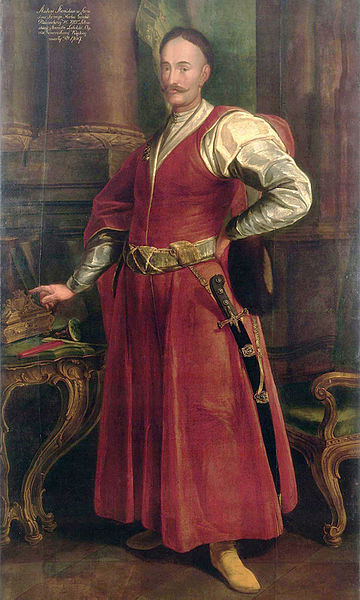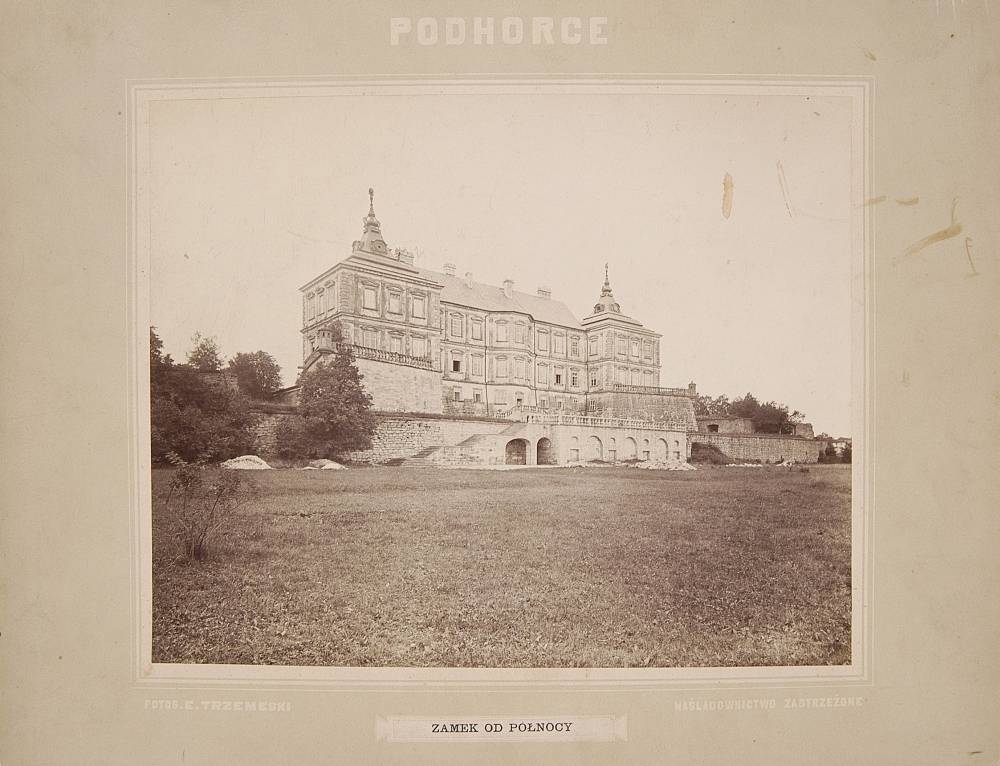August 11, 2019

A Mass in Warsaw opened ceremonies honoring the Holy Cross Mountains Brigade of the National Armed Forces on the 75th anniversary of its formation. The partisans were honored for their sacrifices to the fatherland.
President Andrzej Duda’s official patronage and the presence of ruling party officials underlined the right-wing government’s rehabilitation of a partisan unit that fought both Germans and Soviets and which is celebrated by the far right.
It is seen as a part of a broader attempt by the ruling Law and Justice party to appeal to right-wing voters ahead of the nation’s parliamentary vote in October.
Poland had a large underground Home Army under the command of a government-in-exile that never collaborated with the Germans, and remembrance ceremonies traditionally focus on those soldiers.
Although historians say the Holy Cross Mountains Brigade collaborated with the Nazis, a representative of the veterans, Jan Józef Kasprzyk, sought to deny such a link.
Kasprzyk described the claims of collaboration as a product of postwar communist propaganda meant to smear the unit’s legacy.
The official rehabilitation of the brigade began when Polish Prime Minister Mateusz Morawiecki honored its members at a cemetery in Munich in February 2018.
Morawiecki asserted at a news conference the same day that there were some “Jewish perpetrators” of the Holocaust.
The anniversary observances in Warsaw on Sunday were criticized by the children of Polish resistance fighters. Some wrote a letter to Duda saying, “Our fathers fought against the Nazis because they understood their duty toward their homeland. Any cooperation with the occupiers was unimaginable to them.”
Poland’s chief rabbi rejected an invitation to attend the remembrance ceremony, calling it “a personal insult.”
Opponents of the commemorations held a protest where people held banners that said “No! to collaboration” and “Collaborating with the enemy is treason.”
Israel furious as Poland's president signs bill to limit property claims
WARSAW, Aug 14 (Reuters) - Poland's president has decided to sign a bill that would set limits on the ability of Jews to recover property seized by Nazi German occupiers and retained by post-war communist rulers, drawing fury from Israel which branded the law anti-Semitic.
"I made a decision today on the act, which in recent months was the subject of a lively and loud debate at home and abroad," Andrzej Duda said in a statement published on Saturday. "After an in-depth analysis, I have decided to sign the amendment."
Israel, US criticise Polish property restitution bill

Israel and the US have criticised a bill adopted by Poland's lower house on Wednesday, since, in their opinion, it would prevent former Polish property owners, including Holocaust survivors and their descendants, from regaining their property.
Israeli Foreign Minister Yair Lapid sharply criticised the bill on Twitter, saying that "I condemn the legislation which harms the memory of the Holocaust and the rights of its victims."
"Poland knows what is the right thing to do, to repeal the law," he stated.
The Polish Sejm (lower house) finally adopted on Wednesday an amendment to the Code of Administrative Procedure regarding the possibility of questioning the validity of administrative decisions concerning property restitution, among other things. In accordance with the new law, courts may consider appeals regarding administrative decisions on property only if they were made within the previous 30 years.
Lapid declared that "Israel will not compromise on a single comma when it comes to the memory of the Holocaust."
In mid-June, when the Sejm started working on an amendment, Lapid condemned the bill, saying that it was "a direct and painful attack on the rights of Holocaust survivors and their descendants."
"This is not the first time that the Poles are trying to turn a blind eye to what was done in Poland during the Holocaust," he added.
In a statement, US Secretary of State Antony Blinken said on Wednesday that the US was 'deeply concerned' about the passage by the Sejm of an amendment to the Code of Administrative Procedure restricting restitution of property confiscated during the Communist era. He also appealed to President Andrzej Duda either not to sign it into law or to send it to the Constitutional Tribunal.
Modern Poland had no slavery, it had serfdom – a system that according to many contemporary researchers approached some of the most drastic realizations of slavery and played a key role in establishing Polish domination in Eastern Europe. But was Poland a colonial empire?

Johannes de Ram (1648-1693), "Regni Poloniae et Ducatus Lithuaniae, Volhyniae, Podoliae, Ucraniae, Prussiae, Livoniae exactissima descriptio"; Source: Polona.pl
Slavery vs. Serfdom, or Was Poland a Colonial Empire?
What is Serfdom?
Serfdom (Pol. pańszczyzna) is a development of a specific feudal relationship between the landowner and the tenant, in the Western feudal system usually referred to as socage. In its most typical realization, a farmer held a piece of his lord's land in exchange for some kind of obligation. In the Medieval West, this most usually took form of supplying the lord with produce but could also have meant a straightforward payment of cash, called rent. Starting in the 15th century, this kind of relation gradually and consistently disappeared from the West, so as to become a complete relic by the 18th century.
At around the same time Eastern and Central Europe witnessed the exact opposite trend: the obligations of serfdom took on harsher and harsher forms. A peasant in the Polish-Lithuanian Commonwealth was obliged to work on his lord's land for a fixed number of days (this was at first considered as payment for using the land) – and these quota kept growing in early modern Poland, leading to a situation where the amount could reach more than seven days a week (sic!). This means that in order to fulfil his obligations toward the lord (pan), a peasant would have to work the land with his family. This itself turned peasants into quasi-slaves labouring on the land of the landowners. But the growing pańszczyzna was only one aspect of the escalating oppression of peasantry.
Tightening of the Screw
Even earlier, the nobility used its political impact to attach peasants to their land making them, technically speaking, glebae adscripti – this step subsequently confirmed through a series of Sejm constitutions, effectively prohibiting peasants from leaving the land of their lord and from changing their dwelling.
During this period the landowner's legal control over peasants also grew: sanctions were introduced culminating in capital punishment. The license and impunity of landowners and their administrators vis-a-vis their peasants was boundless. As French historian Daniel Beauvois cogently showed, landowners in 19th century Ukraine were extremely cruel and their cruelty was never appropriately punished: beating a peasant to death entailed a “punishment” of “a month of arrest and performing a penance suggested by a priest”.
But szlachta had also more sophisticated modes of subjugating peasants apart from cruelty. One of such inventions was propination – a privilege granted to szlachta, which gave the landowners monopoly over profits from alcohol drank by peasants they owned. Peasants had to buy at least a given quota of vodka from the landowner, which means they were spending their money in the business of the landowner. Propination became one of the main causes of alcoholism among Polish peasants.
The landowner was also the one to decide whether a peasant could leave the village and even the future of his children – whether his sons could be educated in the town and become craftsmen or whether they would stay in the village working the land. The landowner also decided the fate of widows, who were often made to marry a peasant selected by the master in order to fill in gaps in workforce.
As a result much of the peasant population of the Polish Lithuanian Commonwealth lived in a social situation that was not unlike that of the slaves in America – and, as Jan Sowa suggets, could be reminiscent of scenes from American films about the South.
“Had we stripped Quentin Tarantino's Django of a layer of exaggerated violence, so typical of this director, we would arrive at a pretty faithful picture of the countryside in the Polish Commonwealth.”
Like the black slaves in the plantations of the South, peasants in Poland were tied to the land, had to work hard (and for free), they could be severely punished by nobles living in white manors, and if they escaped, they were hunted. Just like their American counterparts, they lived a life that was hopeless and without much hope for change.
According to Jan Sowa the only difference between serfdom in Eastern and Central Europe and slavery as we know it from the Americas was that people were not sold individually, which means that members of families were not separated from each other. This does not mean however that there was no human trafficking. There was but it was a wholesale trade – villages were sold en bloc with all their population.
Serfdom: Genesis
But how and why did this Polish serfdom originate? And what was its role in the economic system of the Commonwealth? As Jan Sowa explains, the early development and expansion of serfdom in Poland was rooted in the much different economic organization of the East and West Europe whose different ways of evolution have become apparent by the 16th century:
“West of the Elbe river feudalism becomes obsolete and is replaced by different forms of (proto)capitalist order – this is accompanied by the diminishing role of agriculture, and the rising significance of trade and production. Poor masses migrate from the countryside to the cities, supplying a reserve army of workers, which will soon feed the proletariat.
The situation takes a completely different turn in the East where “these masses remain stuck in the country, the economy is dominated by agriculture, and all set on export, while the towns rather than improving their role, are becoming weaker”, Sowa explains.
The economy of the Polish-Lithuanian Commonwealth in this period was almost exclusively based on growing crops within a system of the so-called folwarks, the largest of which could be compared to latifundial estates running on serf labour – part of the essentially anti-modern socio-political order which Sowa describes as a "conflation of slavery and the nobility's license, set up within the framework of a backward agrarian empire". Most of the grain was then exported to Western Europe, so that szlachta even pictured Poland as the granary of Europe.
While this may have been the case at some point, by the 16th century this situation began to rapidly change. The more and more innovative and competitive agriculture in the West gradually made Polish grain uncompetitive. The only way for the nobility to stay in the game (which for them meant lucrative income) was to look for ways to increase production – but this could be only accomplished by either a greater oppression of serfs (see above) or colonizing more land, or both. This leads us to another question...
Was Poland A Colonial Empire?
In 1569, the Polish Crown entered a political union with Grand Duchy of Lithuania, which resulted in forming one of the biggest countries in the history of Europe: The Polish-Lithuanian Commonwealth. The same political act incorporated large portions of most south-eastern voivodeships administered until then by the Grand Duchy of Lithuania into the Crown of Poland. This meant that large portions of the region which is today's Ukraine became the scene of a huge Polish economic expansion – a process that has been recently more and more often called 'colonization'.
In what way did Poland colonize Ukraine? Sowa points that Polish colonization of Ukraine may be compared to the British colonization of India, in both cases it was only the elites (land owners) that were active in colonization. These elites were, on the one hand, coming from Poland to buy land (with peasants, naturally), on the other, the local Ruthenian nobility, owners of vast lands in this region, was becoming increasingly Polonized (a process which by then had been going on for a couple of generations). This resulted in a situation where much of the Ukrainian farming land was in the hands of Polish or Polonized nobility – in other words in the hands of Polish landlords. According to the calculations of Daniel Beauvois, at the time of the partitions around 3 million Ukrainian peasants were owned by some 7 thousand Polish landowners, wherein the top 200 richest among them owned half a million peasant souls.
Sowa tracks down elements of colonial discourse in the Polish presence in Ukraine, like the myth of terra nullius (where the steppes of Ukraine, allegedly devoid of human presence, can be compared to the vast of American West in the ideology of Manifest Destiny), deliberations on material and military advantages of having a colony, and the idea of the cultural supremacy of the colonizers over the indigenous population, this was accompanied by a version of mission civilisatrice. And just like with India, the Polish colonization of Ukraine didn't mean bringing civilization but rather greater barbarity and oppression. This required some kind of rationalization, which was provided by the Sarmatian ideology.
Sarmatians vs. Children of Ham
Systems that relied on slavery developed ideologies that would explain and justify the deeply unjust systems. In America such justification was provided by the biblical story of the Curse of Canaan. Many generations of children were taught at school the story of Noah, who had cursed his son Ham and prophesied that Ham's son Canaan would become the slave to his other brothers. Canaan was seen as the progenitor of the black African population and the myth served to justify the race inequality.
Interestingly the same myth was used around the same time in Poland. Also here szlachta identified with the descendants of Noah's son Japheth (traditionally thought to be the protoplast of Aryans), and believed that peasants were descended from Ham – this found its reflection in the fact that this very name (Pol. Cham) in Polish became a derogative generic term for peasant (cham), often used in opposition with the word ‘pan’ (lord, sir).
But constructing ideologies, which would justify social and racial boundaries, was significantly more difficult in the Polish-Lithuanian Commonwealth than in America. In Poland the dominating elites of szlachta represented basically the same ethnic and cultural type as the subjugated population, speaking the same or similar language, and worshipping the same religion (even if in a different rite). In this case the barrier of heterogeneity, that would allow for ideologically distinguishing between the two populations, would simply have to be made up. And it was.
Around 16th century the nobility started to identify themselves with the descendants of the ancient Sarmatian tribe (mentioned already by Plutarch), which according to Polish nobles (who were now calling themselves Sarmatians!), had once conquered the lands of Slavs and subjugated its rural population. This genetic myth helped to establish a symbolical division between members of the nobility (that is the top ten percent of the population) and the rural local population. The szlachta was not only better, it was of a different, higher quality, concludes Sowa.
But the analogy between the ideologies of American slavery and Polish serfdom can be taken further. The common American derogatory term based on the Latin word for black, 'niger', finds a surprising semantic correlation in the Polish word ‘czerń’ [adj. czarny - 'black'], a generic neutrum denoting in the Sarmatic idiom which became standard Polish for the Ruthenian populace of Ukraine, possibly of revolting spirit. This also points to the fact that the realities of skin and colour were just as easily manipulated through cultural and linguistic operations.
Ukraine: The Polish Heart of Darkness
Polish-Ukrainian historian Bogdan Huk suggests this was one of the many ways in which the Ruthenian subaltern in Ukraine was dehumanized. Huk traces these modes of dehumanizing the Ruthenian/Ukrainian subaltern in the design of white manors isolated from the dwellings of the chern as with a sanitary cordon, as well as the anthropological doctrine of the Catholic Church which considered the Orthodox Ukrainians as the Other. Huk goes on to call the exclusive Sarmatian ideology practised in Kresy as perversely close to racism avant la lettre, and considers the disdainful approach of Polish lords toward Ukrainian peasants as a key cause of brutal, bloody uprisings in Ukraine, from the Khmelnitsky Uprising in 1648 up to the massacre in Volhynia during WW2.
The boundaries between nobility and peasants (and other social groups) persisted well into the 19th and 20th centuries. A shocking proof of how terribly effective this Sarmatian ideology was, can be found in a personal letter of Zygmunt Krasiński, one of the three greatest Polish Romantic poets in the 19th century (and a descendant of an aristocratic family). In the mid-19th century Krasiński wrote to his English friend Henry Reeve:
"Believe me and rest assured that apart from aristocracy there’s nothing in Poland: no talent, no bright minds, nor sense of sacrifice. Our third state [bourgeoisie] is nonsense; our peasants are machines. Only we [nobles] are Poland."
Abolition of Serfdom and Agrarian Revolution
Serfdom and its possible abolition was a recurrent issue with much of Polish modern history. It surfaced most visibly in the time of national uprisings, whenever the nobility attempted to channel the potential of the peasants into military effort. This was arguably most successful during the Kościuszko Uprising in 1794, when large masses of peasant population joined Kościuszko, a move endorsed by the Proclamation of Połaniec which promised a reduction of pańszczynzna.
In fact, the system of pańszczyzna persisted in Poland (Kingdom of Poland) until 1864 when it was finally abolished by the Tsar. Its relics however survived well into the 20th century (for example, in Spisz and Orawa where it was practised as late as the interwar period). Even the resurrected Poland (1918-1939), despite passing laws that would enfranchise peasants, was never successful in implementing the reform. It took the Communists to implement the reform in 1944-1946 – only then did Polish peasants become owners of their land. This was done with much brutality and through revolutionary measures, a fact that made historians speak of an agrarian revolution rather than reform. Already two years after this revolutionary transformation of ownership relations, the Communists initated the process of collectivization (1948) which would lead to yet different model of farming and ownership.
Long Shadows of Serfdom
In recent years the historical issue of serfdom was subject to a lively and at times heated debate in Poland. The real nature of serfdom was addressed by historians, writers and journalists but without much consensus.
In 2014, the year that marked the 150th anniversary of the abolition of serfdom in Poland, one author suggested that a possible way of celebrating this historical moment would be to pay out reparations to the descendants of former peasants whose situation he considered not much different to that of slaves (Follow link). This radical approach found little support. Other experts, including history professors, discarded the very possibility of equaling the two systems.
The controversy around serfdom gave rise to a vivid national discussion on the cultural roots of Polish national identity. It was suggested that despite a popular claim to noble roots, much of Polish society is descended from former peasants. These historical repercussions were addressed by journalists who sought relics of serf-run folwark economy in the corporate environments of today's Poland, with directors and ordinary employees reproducing the cham and pan relations typical of the folwark.
One of the loudest theatrical productions to reflect on those issues wasW imię Jakuba S. directed by Paweł Demirski and Monika Strzępka in 2011. Loosely based on the 1926 poem by Polish Communist writer Bruno Jasieński, about the controversial figure of Jakub Szela, the leader of a bloody peasant uprising in Galicia in 1846. The piece offered insightful parallels between contemporary capitalist reality and the situation of Polish serfs across centuries, inviting the re-assessment of the historical figure of Szela (pictured in history textbooks as a diabolical paragon of national treason).
In music, the Polish folk band R.U.T.A. engaged in a research project that involved field archive search for the original songs of the Polish, Ukrainian, Belarusian and Russian folk, many of them suffering under serfdom. This resulted in two important punk-folk albums Gore (2011) and Na Uschod (2012).
Annexations by Poland in 1938 OR HOW WORLD WAR II STARTED....DAY ONE OF WWII !!!
Within the region originally demanded from Czechoslovakia by Nazi Germany in 1938 was a
n important railway junction city of Bohumín. The Poles regarded the city as of crucial importance to the area and to Polish interests. On 28 September, Beneš composed a note to the Polish administration offering to reopen the debate surrounding the territorial demarcation in Těšínsko in the interest of mutual relations, but he dlayed in sending it in hopes of good news from London and Paris, which came only in a limited form. Beneš then turned to the Soviet leadership in Moscow, which begun a partial mobilisation in eastern Belarus and the Ukrainian SSR and threatened Poland with the dissolution of the Soviet-Polish non-aggression pact.[4]
Nevertheless, the Polish leader, Colonel Józef Beck believed that Warsaw should act rapidly to forestall the German occupation of the city. At noon on 30 September, Poland gave an ultimatum to the Czechoslovak government. It demanded the immediate evacuation of Czechoslovak troops and police and gave Prague time until noon the following day. At 11:45 a.m. on 1 October the Czechoslovak foreign ministry called the Polish ambassador in Prague and told him that Poland could have what it wanted. The Polish Army, commanded by General Władysław Bortnowski, annexed an area of 801.5 km² with a population of 227,399 people.
The Germans were delighted with this outcome. They were happy to give up a provincial rail centre to Poland; it was a small sacrifice indeed. It spread the blame of the partition of Czechoslovakia, made Poland a seeming accomplice in the process and confused the issue as well as political expectations. Poland was accused of being an accomplice of Nazi Germany – a charge that Warsaw was hard put to deny.[5] Poland occupied some northern parts of Slovakia and received from Czechoslovakia Zaolzie, territories around Suchá Hora and Hladovka, around Javorina, and in addition the territory around Lesnicadisambiguation needed in the Pieniny Mountains, a small territory around Skalité and some other very small border regions (they officially received the territories on 1 November 1938 (see also Munich Agreement and First Vienna Award).
Territorial changes on the (Czecho)Slovak-Polish border between 1902–1945 (red parts – to Austrian Galicia/Poland; green parts – to Czechoslovakia/Slovakia)


.png)


.png)









I am from California and a few months ago I was confirmed herpes 1 virus positive and ever since then I have been doing research on how I can get rid of the virus, I was lucky to come across aba herbs. I inbox Dr Aba after scrolling through his page, the doctor responded nicely and told me that he is going to ship the cure medications to me via a shipping company, he also said I am going to get cured within two to three weeks! I never doubted him because many have said so much good news about his herbal medicine on every site and everything really went as planned.. His herbal treatments are completely legit and I recommend you contact him on dr.abaherbalhome@gmail.com or WhatsApp his number on +2348107155060
ReplyDelete